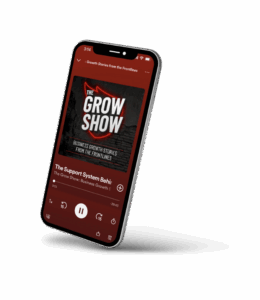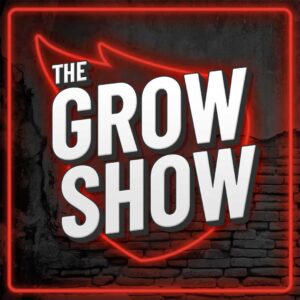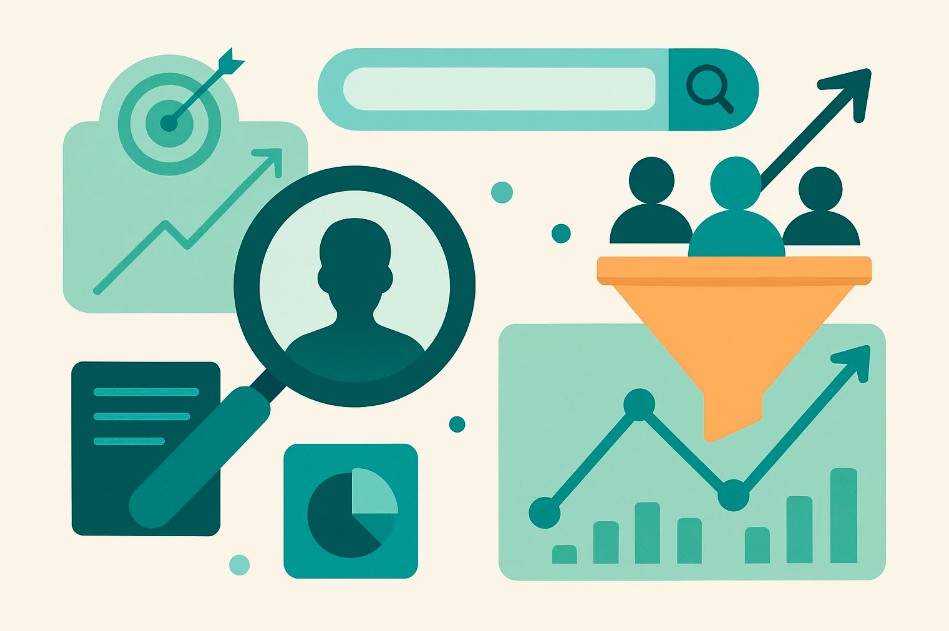Contents
You Must First Understand Your Audience
To truly connect, you need to understand who you’re speaking to, what they care about, and why they’d listen. That means going beyond surface-level demographics and tapping into deeper insights like pain points, motivations, and buying behavior.
Core market personalization tactics to implement:
- Audience Segmentation: Categorize by role, industry, or behavior to deliver more relevant and targeted messaging that resonates.
- Data-Driven Targeting: Leverage analytics to identify trends, refine messaging, and anticipate audience needs before they arise.
- Surveys & Feedback Loops: Use direct input to continuously refine your strategy, strengthen relationships, and evolve with your audience.
Start by segmenting your audience. Group contacts based on shared attributes—industry, job function, company size, decision-making role, or behavioral data. This allows you to craft messaging that speaks directly to what each segment needs, making your outreach more relevant and likely to convert.
But segmentation is just the beginning. Smart marketers layer on data analytics to refine their approach. Engagement metrics, purchase history, and content performance reveal what’s working and where opportunities lie. Use this intel to predict what each audience segment wants next—and deliver it before they ask.
Want even sharper insights? Just ask. Surveys and feedback loops are underutilized tools that give you a direct line into your audience’s mindset. Regular check-ins demonstrate that you’re listening and adapting. When people feel heard, they engage, and when they engage, they convert.
Craft Personalized Messages for Prospect Interests
Once you’ve done the legwork to understand your audience, it’s time to translate those insights into personalized messaging that cuts through the noise. Personalization isn’t just about using someone’s first name—it’s about speaking their language, aligning with their challenges, and presenting solutions that matter. Here’s how to put it into action:
Use the Right Tone and Language
Effective communication begins with the right tone. Your message should reflect how your audience speaks, thinks, and makes decisions.
- Keep it sharp and conversational when speaking to startups, creatives, or younger demographics.
- Lean into clarity and professionalism when addressing executives in regulated industries like finance, healthcare, or legal.
- Mirror your audience’s vocabulary—industry-specific terms, phrases, or cultural references show you “get” them.
- The right tone builds trust before they even read the pitch.
Highlight Relevant Benefits
Your audience doesn’t want a rundown of features—they want results. Position your solution as the answer to their most pressing challenges.
- Lead with benefits, not product specs. Speak to outcomes like saved time, increased revenue, or improved workflow.
- Customize your value props based on their role—what matters to a CFO differs from what a Sales Director prioritizes.
- Reinforce your message with data, ROI metrics, or testimonials that prove the payoff. Let your results do the selling.
Incorporate Personal Stories
Storytelling transforms facts into connection. Real stories make your messaging relatable and memorable.
- Share success stories that align with your audience’s industry or challenge—they want to see themselves in your solution.
- Use mini case studies or anecdotes to humanize your value and demonstrate real-world application.
- Include visuals or stats to enhance impact and bring your stories to life.
Personalized outreach is just one piece of the puzzle. Download our comprehensive guide to outbound sales to discover how to build scalable, high-converting strategies that align your messaging, tech, and team from first touch to close.
What’s the Best Technology for Outreach Personalization?
The best technology for outreach personalization transforms insight into action, at scale, with precision. It’s not just about sending emails or tracking contacts. It’s about leveraging the right tools to automate smartly, engage meaningfully, and pivot quickly based on data, all while maintaining a human touch.
To personalize effectively, your tech stack should empower your team to:
- Deliver the right message to the right person at the right time.
- Use behavioral data to drive timing, tone, and content.
- Scale outreach without losing relevance or authenticity.
Email Automation Tools
Personalized email campaigns can drive up to 6x higher transaction rates (Experian).
Email personalization at scale is no longer optional—it’s expected. Automation tools allow you to create dynamic campaigns triggered by behavior, engagement, and timing.
Top Tools:
- HubSpot – Powerful for behavior-based triggers, dynamic content, and lead nurturing workflows. Ideal for B2B.
- ActiveCampaign – Known for deep segmentation, automation maps, and CRM integration for personalization.
- Mailchimp – Great for SMBs; offers content personalization, journey builders, and predictive sending.
CRM Systems
CRMs that enable sales and marketing alignment can boost revenue by 34% (Nutshell).
Your CRM is the personalization brain. It houses every detail about your contacts—past interactions, preferences, decision cycles—and turns that data into action.
Top Tools:
- Salesforce – Enterprise-grade CRM with customizable dashboards, AI-powered insights, and automation.
- HubSpot CRM – User-friendly, scalable, and integrates seamlessly with sales and marketing tools.
- Zoho CRM – Cost-effective with strong automation, segmentation, and omnichannel communication tools.
Social Media Listening Tools
61% of consumers expect brands to tailor experiences based on social interactions (Accenture).
Want to personalize in real time? Listen before you speak. Social listening helps you uncover trends, sentiments, and conversation triggers that inform timely, relevant engagement.
Top Tools:
- Sprout Social – Real-time monitoring, competitor benchmarking, and sentiment analysis.
- Brandwatch – AI-powered insights into brand mentions, industry trends, and influencer activity.
- Hootsuite Insights – Tracks conversations across platforms, integrated with customizable alerts.
Data Analytics and Insights
Companies using data-driven personalization see 5–8x ROI on marketing spend (McKinsey).
Analytics tell you what’s working, what’s not, and what’s next. From click-through rates to content preferences, insight-driven personalization means better decisions, better timing, and better results.
Top Tools:
- Google Analytics 4 – Tracks user behavior across web and app to inform outreach strategy.
- Mixpanel – Advanced funnel and cohort analysis for tracking how users engage across journeys.
- Heap – Automates data capture to surface behavior trends and segmentation insights.
Chatbots and AI Assistants
AI chatbots can reduce customer service costs by up to 30% while improving personalization (IBM).
Chatbots and AI assistants enable always-on personalization—answering questions, recommending products, and guiding next steps based on real-time user data.
Top Tools:
- Intercom – Combines AI chat with human hand-off, great for SaaS and B2B sales teams.
- Drift – Conversational marketing bot that personalizes based on visitor behavior and routing logic.
- Tidio – Affordable and effective chatbot with AI-driven recommendations and automation for SMBs.
How Can I Build Relationships Through Follow-Up?
Great outreach doesn’t end with the first message—it’s what happens next that nurtures relationships and drives decisions. Strategic follow-up is where trust is built, objections are addressed, and deals are won.
Time It Right
Follow up within 5–7 business days to strike the right balance—soon enough to stay top-of-mind, but not so soon that you feel intrusive.
Pro Tip: Set reminders within your CRM to track follow-up windows. Timing consistency shows professionalism and persistence without being pushy.
Make It Personal
Never send a generic “just checking in” message. Reference your last interaction, mention a specific pain point, or comment on a relevant update.
Pro Tip: Use custom snippets in email tools (like HubSpot or ActiveCampaign) to quickly add personal context without rewriting from scratch.
Reinforce Value
Don’t rehash your pitch—clarify how your solution directly impacts their goals. Tie your follow-up to tangible outcomes they care about: saving time, cutting costs, and increasing leads.
Pro Tip: Include a case study, testimonial, or data point that backs up your promise and makes your value undeniable.
Each follow-up is a chance to differentiate yourself. The goal isn’t just to stay in their inbox—it’s to stay relevant, valuable, and trusted. Done right, follow-up becomes the engine of conversion, not just a courtesy.
How Can I Measure the Effectiveness of Personalized Outreach?
Personalization should be a performance engine, not a one-time tactic. To know what’s working, you need to track what’s resonating, test variations, and tune your approach based on real engagement and feedback.
Personalized outreach only works when it’s tracked, tested, and tuned over time.
To know what’s driving engagement—and what’s falling flat—you need to monitor performance, gather feedback, and optimize with intent.
Start by zeroing in on engagement metrics. These numbers reveal how your message is landing.
- Open rates = subject line strength
- Click-through rates = content relevance
- Response rates = messaging clarity and value
Dig deeper by comparing performance across audience segments. Are specific job titles or industries responding more than others? If a particular group—say, enterprise decision-makers—is clicking but not converting, it could signal a misaligned CTA or an unclear next step. Adjust accordingly.
Next, listen to your audience.
Don’t rely on assumptions when feedback is just one question away.
- Ask: “Was this helpful?” or “What would you rather receive?”
- Collect qualitative feedback through surveys or one-question polls
- Use responses to refine tone, content, and delivery timing
This feedback loop sharpens your approach and shows your audience that you’re listening. When people feel heard, they’re more likely to engage and convert.
Now it’s time to optimize with intent.
Personalization isn’t a one-and-done campaign—it’s an ongoing process.
- A/B test subject lines, messaging angles, or send times
- Rotate channels—some audiences prefer email, others LinkedIn
- Continually refine based on performance trends and audience behavior
Example: A B2B SaaS company discovered that its video content was seeing high engagement but low demo bookings. After analyzing click-through data and gathering feedback, it embedded short demo previews directly in follow-ups and used a chatbot to prompt scheduling. The result: a 27% lift in booked meetings within one month.
Final Thoughts
Personalized outreach is the fastest route to trust, engagement, and conversion. From understanding your audience and tailoring your messages to leveraging technology and measuring performance, every touchpoint counts.
It’s not about using someone’s name in an email—it’s about making every message feel like it was made just for them.
Take Your Personalized Outreach to New Heights
Ready to elevate your B2B lead generation with personalization that actually converts? At Abstrakt, we specialize in helping companies like yours scale smarter, not harder.
We combine audience insight, creative strategy, and sales expertise to drive real results. Our tailored outreach solutions aren’t just personalized—they’re performance-driven.

Madison Hendrix
Madison has worked in SEO and content writing at Abstrakt for over 5 years and has become a certified lead generation expert through her hours upon hours of research to identify the best possible strategies for companies to grow within our niche industry target audiences. An early adopter of AIO (A.I. Optimization) with many organic search accolades - she brings a unique level of expertise to Abstrakt providing helpful info to all of our core audiences.
- Madison Hendrix#molongui-disabled-link
- Madison Hendrix#molongui-disabled-link
- Madison Hendrix#molongui-disabled-link
- Madison Hendrix#molongui-disabled-link







